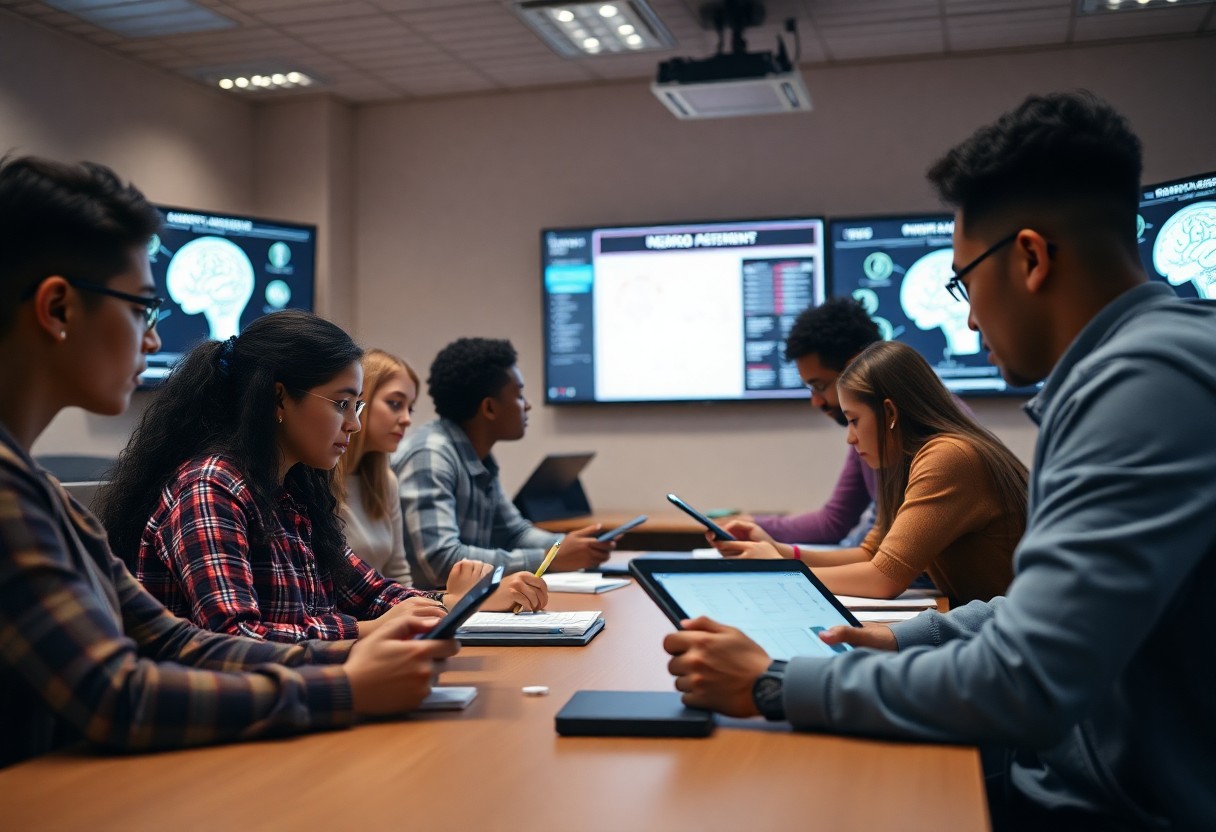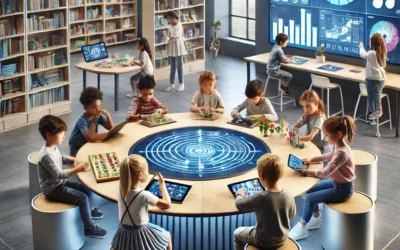Learning how to effectively integrate cognitive assessment tools into your neuroplasticity-based learning strategies can significantly enhance your educational journey. By understanding how these tools measure mental functions and identify areas for improvement, you can tailor your approach to maximize neural connections and foster adaptable learning. This guide will provide you with crucial insights and practical steps to help you optimize your learning experience through the strategic use of cognitive assessments.
Understanding Cognitive Assessment Tools
While exploring neuroplasticity-based learning approaches, it is vital to grasp the role of cognitive assessment tools in enhancing your educational strategies. These tools serve as instruments to evaluate various cognitive functions, allowing you to identify strengths and areas for improvement in learners. By effectively utilizing these assessments, you can tailor your teaching methods to maximize engagement and retention across a range of learning environments.
Definition and Importance
Clearly, cognitive assessment tools encompass a variety of techniques designed to measure cognitive abilities, including memory, attention, reasoning, and problem-solving skills. These assessments provide insights into how learners process information and adapt to new challenges, guiding your approach to tailored interventions. Utilizing these tools is vital; they not only illuminate individual learning profiles but also foster an understanding of how the brain can reorganize itself and adapt through targeted training.
Types of Cognitive Assessment Tools
Tools for cognitive assessment can be categorized into various types, each serving distinct purposes in evaluating cognitive functions. Common types of assessments include standardized tests, observational assessments, and dynamic assessments. By understanding the differences between them, you can select the most suitable method for your educational objectives.
| Type of Tool | Description |
| Standardized Tests | Formal assessments that measure specific cognitive abilities under controlled conditions. |
| Observational Assessments | Informal assessments conducted through observing a learner’s behavior in real-time. |
| Dynamic Assessments | Assessments that focus on a learner’s potential for change and development during the test. |
| Self-Report Tools | Instruments that require the learner to self-evaluate their cognitive strengths and challenges. |
| Neurocognitive Tests | Tests specifically targeting brain function, often involving tasks that reflect daily cognitive demands. |
It is important to recognize the unique attributes of each type of cognitive assessment tool. Standardized tests offer quantifiable data, while observational assessments allow for a nuanced understanding of behaviors in natural settings. Dynamic assessments focus on a learner’s ability to learn, rather than just their current level of skill, which can be particularly beneficial in neuroplasticity-based approaches. Similarly, self-report tools can provide personal insights into your learning experience, and neurocognitive tests provide detailed information about how your brain functions in various scenarios.
- Each tool serves a distinct purpose and can provide complementary insights when used together.
| Type of Tool | Benefits |
| Standardized Tests | Reliable benchmarks for gauging cognitive abilities across large populations. |
| Observational Assessments | Contextual insights into how learners interact with their environment. |
| Dynamic Assessments | Insights into potential learning growth and cognitive adaptability. |
| Self-Report Tools | Encourages self-awareness and metacognitive skills in learners. |
| Neurocognitive Tests | Identifies specific areas of cognitive enhancement that can benefit from targeted training. |
This understanding of the types and benefits of cognitive assessment tools will empower you to make informed decisions when integrating them into your neuroplasticity-based learning approaches. By carefully selecting appropriate tools, you are better positioned to enhance learning outcomes and support your learners’ cognitive development.
Neuroplasticity and Learning
Clearly, the relationship between neuroplasticity and learning is fundamental to understanding how the brain adapts and evolves throughout life. Neuroplasticity refers to the brain’s ability to reorganize itself by forming new neural connections in response to experiences, learning, and environmental changes. This dynamic process means that your brain is not a static entity; instead, it is continually reshaping itself based on the activities and stimuli it encounters. As you engage in various learning experiences, your neural pathways strengthen and sometimes even change entirely, allowing for increased cognitive flexibility and capacity for new information. By leveraging neuroplasticity, you can enhance your learning processes and improve your cognitive abilities over time.
Overview of Neuroplasticity
You should understand that neuroplasticity encompasses two main types: structural and functional. Structural neuroplasticity involves the actual physical changes in the brain’s structure as a result of learning or experience, such as the growth of new neurons and synaptic connections. On the other hand, functional neuroplasticity refers to the brain’s ability to move functions from damaged areas to healthier regions. This adaptability is vital not only for recovery from injuries but also for optimizing your learning experiences. By applying cognitive assessment tools, you can better understand your unique neuroplastic potential and tailor your learning methods accordingly.
The Role of Learning in Neuroplasticity
On a fundamental level, learning is one of the primary drivers of neuroplasticity. Every time you absorb information, practice a skill, or engage in a new experience, your brain undergoes changes that enhance its capacity for further learning. This process is influenced by the principles of repetition, reinforcement, and challenge, which play a vital role in establishing and strengthening neural connections. By regularly stimulating your brain through various learning methods, you can encourage the development of new pathways that elevate your cognitive function and overall brain health.
Learning not only demands active engagement but also encourages the repetition of skills and concepts, which solidifies these newly formed neural connections. As you challenge yourself with increasingly complex tasks, your brain adapts to manage these demands, fostering an environment conducive to continuous growth. This interplay between learning and neuroplasticity underscores the significance of adaptive strategies in educational settings and personal development, allowing you to harness your brain’s inherent capabilities for improvement and growth effectively.
How to Choose the Right Cognitive Assessment Tool
The process of selecting the appropriate cognitive assessment tools is necessary for successfully implementing neuroplasticity-based learning approaches. A well-chosen tool should align with your learning objectives, provide meaningful insights into cognitive processes, and incorporate methodologies that support neuroplasticity principles. Understanding the functionalities and frameworks of various assessment tools will allow you to tailor them to your specific needs, ultimately fostering a more adaptable learning environment.
Identifying Learning Objectives
Cognitive assessment tools should start with a clear understanding of your learning objectives. Defining these objectives will guide you in selecting a tool that not only aligns with what you aim to achieve but also effectively measures progress in relevant cognitive domains. Whether your focus is on improving memory, attention, or problem-solving skills, your assessments should quantify these areas meaningfully to facilitate continuous growth and development.
Evaluating Tool Effectiveness
There’s an important distinction between cognitive assessment tools that merely measure skills and those that facilitate neuroplasticity through dynamic feedback. Effective tools should adapt and provide insights that allow for targeted interventions. This evaluative process will help you determine whether a tool is improving cognitive functions or simply tracking them. Regularly reviewing assessment results in relation to your learning goals will enable you to identify any areas requiring further attention and adjustment.
Tool effectiveness can be assessed through various metrics, including user engagement, adaptability, and the ability to provide actionable insights. Look for tools that not only deliver results but also incorporate features such as progress tracking, personalized recommendations, or interactive components that encourage active learning. The best cognitive assessment tools will evolve alongside your learning objectives, ensuring that your approach to neuroplasticity remains relevant and impactful.

Implementing Assessment Tools in Learning Approaches
To effectively integrate cognitive assessment tools within neuroplasticity-based learning approaches, you must follow a structured process that aligns with your educational objectives. This not only ensures consistency but also amplifies the benefits derived from both assessment and learning. Begin by identifying the specific cognitive skills you want to assess and understand how they relate to neuroplasticity and enhanced learning outcomes.
Step-by-Step Guidance
The following table serves as a guide to implement assessment tools proficiently:
| Step | Action |
| 1 | Identify learning objectives linked to neuroplasticity. |
| 2 | Select cognitive assessment tools that measure relevant skills. |
| 3 | Administer assessments at strategic points in the learning process. |
| 4 | Analyze results to identify strengths and areas needing improvement. |
| 5 | Modify learning approaches based on assessment outcomes. |
Little adjustments can enhance your integration process and foster a more responsive learning environment. Consider customizing your assessment tools to better fit the needs of your learners, such as including a variety of formats like quizzes, practical examinations, and self-assessments. Here are some suggestions to facilitate a successful melding of systems:
Tips for Successful Integration
- Involve learners in the assessment process to increase their engagement.
- Utilize technology to streamline data collection and analysis.
- Provide feedback promptly to maintain momentum in the learning cycle.
- Establish a routine for regular assessments to monitor progress.
Successful integration requires an adaptive mindset. Acknowledge that the effectiveness of your assessments improves with ongoing revisions based on feedback and outcomes. You should remain flexible and open to modifying your approach as needed. This not only enhances the learning experience but also supports neuroplasticity by continually challenging the brain. Embrace these principles as you move forward:
- Practice patience as you incrementally adjust your strategies.
- Collaborate with other educators and specialists to share insights.
- Sustain a reflective practice where you continuously evaluate the effectiveness of your assessment tools.
Knowing how these strategies can empower your learners will ultimately create a more adaptive and effective learning environment that promotes neuroplasticity-based learning approaches.
Factors Influencing Neuroplasticity in Learning
Many factors play a significant role in influencing neuroplasticity during the learning process. These factors can be broadly categorized into environmental and personal influences. Understanding how these elements interact with your brain’s ability to adapt can help you optimize your learning experiences.
- Access to resources and materials.
- Social interactions and collaboration.
- Physical environment and surroundings.
- Exposure to new experiences and challenges.
Assume that your environment is actively shaping your neural pathways; an enriching atmosphere can enhance your ability to learn and grow. To effectively leverage this, you should create a stimulating learning environment that includes diverse resources and supportive social interactions.
Environmental Factors
Neuroplasticity can be significantly impacted by the environmental factors surrounding your learning experiences. This includes the availability of resources, social support, and exposure to varied stimuli. A rich and engaging environment fosters connections in your brain that strengthen learning.
- Availability of educational resources and tools.
- The role of mentorship and social networks.
- Opportunities for exploration and discovery.
- The influence of technology on learning methods.
Knowing how these elements affect your learning can empower you to create an environment that is conducive to neuroplasticity. When you focus on enhancing these aspects, you create a foundation for effective and sustained learning experiences.
Personal Factors
If you want to understand neuroplasticity in learning, personal factors such as your motivation, mindset, and emotional state become imperative considerations. These internal elements can either facilitate or hinder your ability to adapt and learn new information effectively.
- Your intrinsic motivation to learn.
- The presence of a growth mindset.
- Your emotional resilience and stress levels.
- Your prior knowledge and experiences.
After recognizing how personal factors interact with neuroplasticity, you can take steps to enhance your own capabilities. By fostering a positive mindset and managing emotional wellbeing, you equip yourself with the tools for better learning outcomes.
With a deeper understanding of the personal elements that influence neuroplasticity, you can employ strategies that cater to your unique learning style. Prioritizing self-awareness and actively cultivating a growth mindset can help you navigate challenges more effectively. This will further assist in building a strong foundation for lifelong learning, ensuring that you remain adaptive and resilient in your educational pursuits.
- Regular self-reflection on learning experiences.
- Setting achievable learning goals.
- Seeking feedback and constructive criticism.
- Engaging in mindfulness practices to manage stress.
After applying these strategies, you will find that your personal environment is enriched, promoting a more effective neuroplastic approach to learning. The combination of awareness and action allows you to tap into your brain’s capacity for change and growth, imperative for effective learning.
Monitoring and Adjusting Learning Strategies
Now that you have established a framework using cognitive assessment tools, it becomes imperative to monitor and adjust your learning strategies continually. Neuroplasticity, the brain’s ability to adapt and reorganize itself, offers a dynamic environment for learning, making it important for you to stay attuned to your progress. This means regularly evaluating whether your current methods are yielding the expected outcomes and making the necessary modifications to align with your learning goals. A proactive approach will help you stay flexible and responsive to the changing needs of your cognitive development journey.
Assessing Progress with Tools
Assuming you have implemented various cognitive assessment tools, the next step is to analyze the data they produce. These tools can provide insights into your cognitive abilities, revealing patterns and areas that require improvement. By setting specific benchmarks and using tools such as standardized tests, self-reflection questionnaires, or digital applications, you can gain valuable metrics that track your performance over time. The key is to interpret these results meaningfully, which can guide you in adjusting your learning efforts.
Adapting Methods Based on Results
Tools such as cognitive assessments give you empirical data about your learning process, but adapting your methods based on these results is where the true value lies. A change could involve altering your study schedule, incorporating diverse modalities like visual aids or audio elements, or even switching to entirely different learning resources. By assessing the data, you can identify not just what works best for you, but also highlight potential barriers to your progress. This iterative process helps build a more personalized learning experience, further enhancing your journey toward neuroplasticity-driven learning.
Methods rooted in continuous adaptation empower you to fine-tune your approach and fully embrace the learning experience. As you assess your progress and take actionable steps based on that analysis, you’ll discover more effective strategies that align with your unique cognitive profile. Engaging in this process sets you on a path of lifelong learning, as you become increasingly aware of your learning tendencies and patterns. The continuous feedback loop of assessment and adjustment will ultimately lead to greater mastery over your cognitive potential.
Summing Up
With these considerations, you can effectively utilize cognitive assessment tools to support neuroplasticity-based learning approaches. By first evaluating your strengths and weaknesses through these assessments, you gain insightful data that allows you to tailor your learning strategies. Engaging with these tools means you can develop a personalized approach, capitalizing on your cognitive strengths while addressing areas for improvement. This will lead to not only better learning outcomes but also enhance your overall cognitive flexibility and resilience.
Implementing the insights gained from cognitive assessments into your learning routine can foster a dynamic and adaptive educational environment. By continually revisiting and updating your assessments, you ensure that your approach remains relevant and effective, aligning with the latest findings in neuroplasticity research. This proactive strategy empowers you to cultivate lifelong learning habits and a more profound understanding of your cognitive landscape, ultimately promoting sustained personal and intellectual growth.
FAQ
Q: What are cognitive assessment tools, and how do they apply to neuroplasticity-based learning?
A: Cognitive assessment tools are instruments designed to evaluate an individual’s cognitive abilities, such as memory, attention, problem-solving skills, and other mental functions. These tools can provide insights into a person’s current cognitive strengths and weaknesses. In the context of neuroplasticity-based learning approaches, these assessments can help identify specific areas for improvement, allowing educators and practitioners to tailor their methods to enhance cognitive growth, engage specific brain networks, and facilitate long-lasting changes in the brain’s structure and function.
Q: How can I integrate cognitive assessment results into a neuroplasticity-based learning plan?
A: Integrating cognitive assessment results into a learning plan involves first analyzing the specific strengths and weaknesses indicated by the assessments. Once identified, you can develop a targeted approach that focuses on enhancing areas where the individual is lacking while building on their strengths. This might include incorporating specific exercises, activities, or programs aimed at stimulating neuroplastic changes. For instance, if an assessment reveals issues with short-term memory, the learning plan might include memory-recall exercises that encourage repetition and engagement, thereby promoting the development of new neural pathways.
Q: What types of cognitive assessment tools are effective for tracking neuroplastic changes over time?
A: Effective cognitive assessment tools for tracking neuroplastic changes typically include standardized tests, computerized assessments, and observational metrics. Examples of standardized tests might include the WAIS (Wechsler Adult Intelligence Scale) or the WISC (Wechsler Intelligence Scale for Children) for broad cognitive range assessments, alongside memory-specific tests like the Rey Auditory Verbal Learning Test. Computerized assessments can provide real-time feedback on cognitive performance and track changes over time. This method enables practitioners to quantify improvements and adapt learning strategies accordingly. Furthermore, observational metrics, such as progress logs or qualitative self-reports, can also offer valuable insights into an individual’s cognitive development and adjustment to learning strategies.



0 Comments